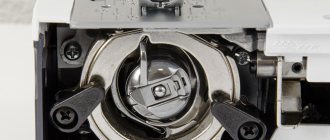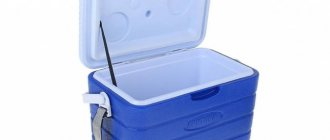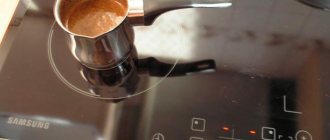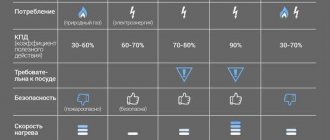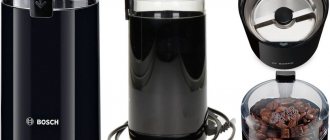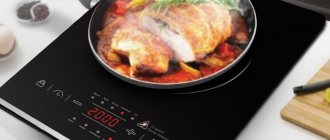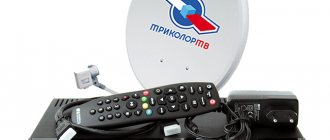14.06.2019
So, you are waiting for the baby to be born. Or he was already born. Obviously, the most correct way to feed children under 1 year of age is breastfeeding. However, often the rhythm of modern life and/or the testimony of pediatricians creates the need for mothers to express milk. Let's assume that you have such a need and you decide to purchase a breast pump. How to navigate the variety of models on the market? For pediatricians and breastfeeding specialists, the main criterion for the effectiveness of a breast pump is its ability to imitate the baby’s natural sucking to the maximum extent, namely: The presence of two phases: (1) the stimulation phase, when the baby stimulates the flow of milk with quick, shallow sucking movements and (2) nutritional phase (expressing phase), when the baby moves on to deeper and less frequent sucking movements in order to receive a well-deserved portion of mother's milk. In the feeding phase (expressing phase), it is important how exactly the vacuum builds up and is released. The baby knows how to do this in his own special way, thereby quickly receiving the required amount of milk. The closer the breast pump is to the baby’s natural sucking, the more effective it is, and therefore the better quality and better it is. This review is devoted to testing the most popular electric breast pumps, which are divided into 2 groups: those capable of simulating a child’s natural sucking and those that cannot imitate it (manual models were not considered). Based on the test results, breast pumps are assigned a final score (from 1 to 10), reflecting how close each device is to the baby’s natural sucking (Appendix 1). Testing was carried out using special equipment to display in real time the process of increasing and releasing vacuum (discharge) during the pumping process (Appendix 2).
Introduction
Some people have the impression that if the baby is completely breastfed, then the mother does not need any additional tools. But, no matter how great the desire to do everything “naturally” and “the old fashioned way,” it should be recognized that the conditions and lifestyle of the modern mother have changed. Most often, she has to spend her maternity leave in multitasking mode, as well as reduce the time before going to work. Breastfeeding mothers may be away without always being able to offer the breast to their baby. When there is a long gap between feedings, milk accumulates in the ducts and causes discomfort to the mother. In this case, a breast pump comes to the rescue - a modern tool that allows you to solve many problems and prevent problems with feeding. The best breast pump for you is the one that will meet your requirements for pumping frequency, physiological capabilities and feeding regimen. We will tell you how to understand the intricacies in this article.
Appendix 2. Summary table of electric breast pump testing results:
see the final table of breast pump testing results (Appendix 1)
** - according to data from the Olant and Detsky Mir online stores as of May 24, 2019.
*** - according to the government procurement website **** - price on the US market (Amazon) about $280 + delivery ***** - according to data from rental contracts
Types of breast pumps
Home and clinical – breast pumps are divided into these two large classes. In other words, they can be professional or domestic.
Professional or clinical
Breast pumps are used in maternity hospitals to help women with lactation problems. Or for those who experience temporary stagnation of milk due to the fact that the baby is not nearby and the natural rhythm of feeding is disrupted. Such devices operate on mains power, are almost silent, and the vibration during pumping is virtually imperceptible. This breast pump imitates a sucking mechanism that is close to physiologically natural.
Household or home
devices are divided into 2 types:
- mechanical (manual)
- electrical (electronic).
Manual breast pump
- an easy-to-use device that operates either on the principle of a piston or has a pump mechanism. A pump breast pump is a nozzle that is applied to the breast (shaped like a funnel) and a rubber bulb with which the device is activated. It is necessary to frequently squeeze and unclench the bulb to ensure the flow of milk from the mammary gland. This type of breast pump is cheap, easy to disassemble and clean. But with frequent pumping, it can contribute to the formation of cracked nipples. Fatigue may occur during use.
There are breast pumps that look like a syringe. They consist of two cylinders. Internal - is applied to the nipple, and the outflow of milk occurs due to the movement of the external cylinder. Very easy to use and clean. But the hands get tired moving the cylinder, and this causes considerable discomfort. A piston breast pump also requires constant hand movement, but it is more powerful and more convenient. The breast attachment attaches to a reservoir (bottle or container) and has a lever that, when pressed, acts like a piston to help the silicone attachment stimulate the breast. Expresses milk quickly and painlessly. Using a piston system is much more convenient than expressing breast milk by hand. The process is virtually painless and rewarding. The mechanism, squeezing and unclenching the nozzle, provides breast massage. The woman herself can regulate the pace and intensity of the impact.
Electric breast pump
– helps to effortlessly express the required volume of milk in the shortest possible time. The principle of its operation is the same as that of a mechanical one - creating a vacuum around the nipple and affecting the areola and adjacent part of the breast. Only in this case, stimulation (compression and release) occurs not manually, but with the help of an electric motor powered by the network or using batteries. An electric breast pump can be equipped with one or two funnels. Accordingly, pumping is done either simultaneously or from each breast in turn.
Benefits of using a breast pump during breastfeeding
Many women underestimate the role of a breast pump during lactation. However, mammologists note that this device is a very important (and sometimes extremely necessary) thing for a woman in labor. Especially in the first few months of breastfeeding your baby.
Using a breast pump during lactation helps to effectively solve the problem of excess or lack of breast milk, as well as to avoid stagnation in the female breast. Also relevant when:
- the child was born prematurely and did not learn to eat independently;
- the baby refuses to breastfeed;
- a woman experiences pain when breastfeeding;
- The baby is separated from the mother due to hospitalization.
For medical reasons, a breast pump is recommended to be used to prevent lactostasis and mastitis, in case of inflammation and cracks in the nipples, and engorgement of the mammary glands. Medical indications also include the need to start the lactation process in the mother after childbirth.
But even in cases where breastfeeding is successfully established, a breast pump is indispensable for women. With its help, a woman can provide her baby with the necessary supply of breast milk if it is necessary to take antibiotics and maintain lactation during weaning.
How to choose a breast pump and what to look for
When it becomes clear that manually expressing milk does not give the desired results (the process is labor-intensive and time-consuming), the question arises - which breast pump to choose. Some mothers, having compared manual expression and using a clinical breast pump, are seriously thinking about buying a professional device for home.
In this case, it’s worth thinking about: would you buy a professional coffee machine for your home (one that would take up half the room and require considerable investment in consumables) just because you were delighted with a cup of coffee in a restaurant? It is unlikely that such an acquisition will be justified. But if you are a coffee lover and are willing to pay for the taste of coffee with other resources, then no one will convince you. By the way, a clinical breast pump can be rented. This option will be much more economical for you.
Still, household breast pumps are more suitable for home use. But which breast pump is better - manual or electric, you will understand by answering some questions and comparing the facts.
How often do you plan to feed your baby expressed milk? If you rarely go away and prefer to store several containers frozen for “insurance,” then purchase a device that is effective for rare uses (manual piston).
If you intend to use a breast pump regularly (for some reason the baby does not latch on, you go to work and plan to be absent all day), then it is better to purchase a powerful electric device. In this case, the costs are completely justified. You can save time and put in less effort.
Which breast pump is best if you're constantly on the go? Most likely portable, battery-powered. It will make it most comfortable for you to move around and follow your baby’s feeding schedule.
The table will help you choose the best breast pump for you.
| Type of breast pump | Operating principle | Pumping intensity and number of cycles | Positive sides | Possible inconveniences |
| Manual | Expression occurs through the use of force | Intensity varies and changes depending on need | Compact, quiet operation, low cost | Considerable labor costs, one funnel; Open system; Does not provide sufficiently powerful suction and cycling; The volume of milk expressed is less than when using an electric accessory. |
| Electric (battery-powered) | Force-free pumping thanks to an electric motor powered by batteries | Intensity varies and changes depending on need | Compact, silent, not very high cost; May be double-funnel. | Batteries drain quickly; The system is open; The power is low, due to this the suction power is weak, the cycle may be disrupted; Works only from a stationary outlet or through a car adapter; Does not support the volume of expressed milk; |
| Household electric breast pump | Medium Power Electric Pump | The cycle varies (from 40 pulses per minute, pressure from 50 mmHg | The average size; Maintains the volume of expressed milk; May be double-funnel. | High price; The system is both open and closed; Works only from a fixed outlet. |
| Electric clinical breast pump | High Power Electric Pump | Cycle varies (up to 60 pulses per minute, pressure up to 220 mmHg | High efficiency; Imitates the baby's sucking rhythm; Maintains and increases the volume of expressed milk; Has two funnels; Quick pumping. | Large size and weight; Very high cost (most often rented); Works only from a fixed outlet; The system is closed. |
If you find it difficult to choose the type of manual breast pump or you have a question about which electric breast pump is better to buy (rent), do not buy this device before giving birth. Make a selection of models, make a list with characteristics. Find out at what price they can be purchased. And after the baby is born, make your final choice. The mohtercare website blog and the specialized “feeding” section will help you decide.
Below we will introduce you to the main brands of breast pump manufacturers to help you form a holistic view of this accessory.
Group I. Models that best imitate a baby’s natural sucking
MEDELA Symphony – final score 10+
Clinical breast pump. Widely distributed in maternity hospitals and neonatology departments around the world. Recognized as an industry leader known for its exceptional performance. It works on a two-phase principle and reproduces natural sucking in the pumping phase with smooth adjustment of the vacuum in both phases. Suitable for both single and double pumping. Very quiet.
Pros:
Highest efficiency, Double pumping (expressing two breasts at the same time), smooth level adjustment, very low noise level.
Minuses:
Large dimensions and weight (2.3 kg), not available for free sale. high price.
Price (RUB): 100,000 (Amazon - $2000).
MEDELA Sonata - final score 10
Top household model from Medela. Tests show that the Sonata is very similar in performance to its older brother, the Symphony. This means that its efficiency is very close to the breast pump market benchmark. In addition to Symphony's inherent physiological sucking behavior during the pumping phase, the manufacturer has added a LifeStyle mode, which is vaguely reminiscent of the sucking pattern of previous generation clinical breast pumps (see Medela Lactina below). The noise level is slightly higher than the Symphony.
Pros:
Very high efficiency, double pumping, additional pumping mode, fairly low noise level (one of the quietest among household ones).
Minuses:
High price. Delivery from the USA .
Price (RUB): 23,000 (Amazon - $280 + shipping).
LACTEA Smart/Smart Plus - final score 10
New. A household breast pump, the manufacturer of which declares complete identity with the best clinical models in terms of efficiency. Testing has shown that in stimulation and expression modes, the breast pump is practically indistinguishable from the reference Medela Symphony, which provides it with exceptional efficiency. In addition to the physiological nature of sucking during the pumping phase, the manufacturer offers an additional 2 modes - “classic” and “gentle”. “Classic” resembles the operation of a classic clinical breast pump. (see Medela Lactina and Sonata, LifeStyle mode). The “gentle” mode is reminiscent of the Sensitive mode of the ARDO Carum clinical model. The breast pump is designed for double expression. There is a Smart Plus model equipped with a display.
Pros:
Very high efficiency, double pumping, 3 different modes, incl. special for sensitive nipples. Low noise level (average between Symphony and Sonata). Affordable price. The most compact and lightest in its group.
Minuses:
Not found. Not well known on the market Price (RUB): 5,950 – 7,650.
Major Breast Pump Brands
| Brand | Description | Equipment |
| Manual breast pumps | ||
| Medela Harmony (Swiss brand) | Two-phase device. The handle is adjustable. Easy to assemble and wash. | Breast pump, removable funnel, container and stand. |
| Philips Avent (UK brand) | Breast pump of very high quality. The massage head is in comfortable contact with the chest, easy to assemble. Expresses milk quickly and in the right volume. | Breast pump, milk storage container with a tight-fitting lid 3 pcs., nipple, breast pads 4 pcs. |
| Electric breast pumps | ||
| Medela Harmony (Swiss brand) | Model of a two-phase breast pump. Performance is above average and runs silently. The device is in the mid-price category. Can be used daily. | Breast pump, convenient stand for the container, lid with several functions. A bag for carrying the device. |
| Philips Avent comfort (UK brand) | When asking the question - which electric breast pump is better, the answer most often will be Avent Philips. Expresses quickly and in sufficient volume. Nice design, sufficient power, convenient nozzle. | Breast pump, milk storage container with a tight-fitting lid 3 pcs., nipple, breast pads 4 pcs. |
Choose the best breast pump: tips for expectant mothers
When choosing a breast pump, experts recommend paying attention to the following factors and criteria:
- Frequency of use.
Manual devices are best suited for nursing mothers who do not have problems with lactation and plan to express milk from time to time, while electric devices are the best solution for regular use. - Equipment.
It is very good if the kit includes 2-3 milk bottles with nipple-shaped attachments. This is very convenient because there is no need to transfer expressed milk into another container before feeding the baby. - Nozzle material.
Silicone tips are considered the most comfortable for the skin. They fit tightly to the nipple, repeating its anatomical shape, and do not injure the skin. - Compact and easy to transport.
For women who are planning a trip, mechanical models will be convenient. Such devices are easy to assemble/disassemble, do not take up much space and do not require a network connection.
Additional products for breast pumps
When using a breast pump, sometimes it becomes necessary to replace spare parts (if they are lost or damaged). You can also choose some accessories that are not included in the kit, but will make using the breast pump easier.
As a rule, manufacturers offer the opportunity to purchase separately:
- replaceable hand pumps;
- massage inserts (silicone pads for breast pump funnels);
- sets of spare parts (consumables).
The most common addition to breast pumps are bags and containers for freezing breast milk.
Containers are purchased according to the selected breast pump. This will allow you to immediately attach them to the device using adapters, without the need for transfusion.
You can purchase any packages. On the mohtercare website, a large range of milk storage products is presented.
Annex 1. Summary table of breast pump testing results
Criteria for evaluation:
- Pumping: closeness to the baby’s natural sucking: (1) - mechanical (sawtooth type), (2) - softer, but not “natural”, (3) - as close as possible to natural
- Vacuum adjustment in the stimulation phase: (1) - yes (0) - no
- Presence of stimulation phase (two-phase): (2) - yes (0) - no
- Natural rhythm of stimulation: (1) natural rhythm - more than 100 cycles per minute, (0) - less than 100 cycles per minute
- Vacuum adjustment during the pumping phase: (1) - smooth adjustment, (0) - no smooth adjustment
- Double pumping: (1) - yes (0) - no
- Availability of additional pumping modes: (1) - yes (0) - no
Which company should you choose when choosing a breast pump?
The popularity of Philips AVENT devices among consumers has not gone away for several years. The company offers only 4 models, including electric and piston breast pumps. The company’s devices are in great demand as they perform their task efficiently and last a long time. Not far behind Philips are the products of the Swiss manufacturer Medela, the quality and wide range of which will please any mother.
There is also no doubt about the reliability of products from the brands Nuk, Canpol, Chicco. However, they are not as comfortable and popular as the products offered by the leaders. Russian manufacturers can boast of producing only mechanical breast pumps. Of course, they are the cheapest, but not as productive.
Manual or electric - make a choice
Manual breast pumps are recommended for those mothers who do not need to pump regularly, but only from time to time. All mechanical devices are divided into:
- Manual ones with a pump or bulb are ineffective and therefore not expensive breast pumps
- Piston or syringe - more gentle, more efficient, more convenient to use, and therefore more expensive.
| Advantages of manual breast pumps: | Flaws: |
|
|
Electric breast pumps - recommended for women who need regular pumping (a child cannot suck on his own, a working mother, during a forced refusal of feeding in order to maintain lactation, etc.)
- Pros: time saving almost 2 times compared to manual pumps, no physical effort required, efficient pumping.
- Disadvantages: they produce a monotonous hum during operation, very high price, and it is impossible to completely sterilize the device.
Electronic breast pumps - what does it mean and is there a difference from electric ones? This is some kind of marketing ploy, both types are electrical devices, only the so-called “electronic” ones are more technologically advanced, have a display and microprocessor control, for example, have a built-in memory that remembers your pumping rhythm. These are expensive devices that are usually purchased by maternity hospitals (when high performance is required), but for a woman at home it is much more profitable to rent such a breast pump.
New or used
Most mothers (61.4%) agree to use only a new breast pump. 37.6% are ready to consider both options.
A Certified Lactation Consultant Says : There is nothing dangerous about a previously used breast pump as long as you sterilize it. Problems may arise if the device is used very intensively and is frequently sterilized. With intensive use, the silicone parts lose elasticity and the device functions worse.
How to use?
Before you start pumping, you should study in detail the operating features of the device. It is also worth considering some recommendations. Before using a breast pump, you should thoroughly wash your hands with antibacterial soap and wipe your breasts with warm water.
All parts of the device (except electronic ones) must be washed and sterilized regularly. Information on how to do this is always contained in the accompanying documentation and depends on the type of device and base material. Please note that the device does not need to be wiped. It is better to simply leave it to dry naturally, lightly covering it with a cotton cloth. The same applies to milk storage containers.
To make lactation more effective, you can drink warm water or weak tea shortly before pumping. Doctors recommend lightly massaging the mammary glands, nipples and areola before using the device - these manipulations stimulate the full production of the hormone oxytocin, which is responsible for the formation of milk in a woman’s breast. Before expressing, you should take a comfortable body position - usually women express while sitting, placing a small pillow under the lower back. If you lean forward a little during these manipulations, the milk will begin to flow from the lobules more actively and flow out of the breast better.
It is important to install the device correctly. The nipple must be located in the very center of the funnel, and the edges of the device must tightly touch the skin of the breast. If the fit is not tight enough, then a vacuum will not form, and therefore, pumping will not work. In this case, the nipple must be in a free state; its contact with the walls of the funnel is unacceptable, otherwise expressing will be accompanied by severe painful sensations. The funnel should be selected so that its diameter matches the size of the breast.
The device button (or bulb) should be pressed until the first drops of liquid appear. At first its volume is small, and the process is quite slow, but after a few minutes a stream forms. Pumping should be done immediately after feeding so that the baby can get a full breast. This will make it easier for him to suck. If during pumping a young mother feels tired and wants to rest, then she should take a short break and lightly massage her breasts. The device should remain nearby at this time. You should express until the mammary gland becomes completely soft and the dense lobules are smoothed out. When using an electric appliance, this usually takes about 15 minutes. A manual breast pump lasts longer. If milk does not appear within the first five minutes after applying the device, stop the procedure. Come back to pumping later. If a woman feels discomfort and unpleasant sensations while using the devices, work should also be suspended and the device should be checked for correct assembly.
The resulting milk must be stored in the refrigerator in a tightly sealed bottle. Before use, it should be heated in the microwave or in a water bath. It can be stored for no more than 2 days. If desired, milk can be frozen, then its shelf life will be increased to 3 months.
Let's sum it up
Every mother should understand that by experience it is possible to determine which breast pump will be better than the rest. This is explained by the fact that all women are individual, each with their own characteristics of breast anatomy. Before purchasing, it is important to determine what exactly a breast pump is needed for. So, if a woman only needs to use the device occasionally, a regular manual breast pump will do. It makes sense to spend money on an expensive electronic device if you plan to regularly express milk in volume.
